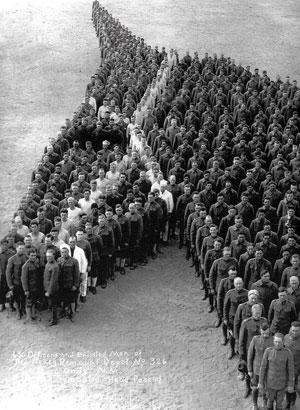
Millions more victims of World War I

650 ofizial eta soldadu aliatuk irudi hau osatu zuten 1915ean, frontean hildako zaldien omenez.
About sixteen million animals participated in the First World War in armies on both sides: dogs, cats, horses for transporting equipment, mules, donkeys and gambones, pigeons messengers…
It is difficult to pinpoint the number of victims in wars, even more difficult when it comes to animals. But it is estimated that more than half of them died. Eight million horses and more than one million dogs died on the front. As in humans, animals were also “civilian” victims. Therefore, to the enormous number of human beings killed in the Great War (between ten and 31 million), another ten million animals must be added.